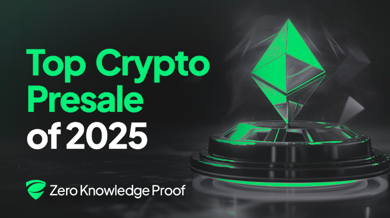
In an insightful blog post published on October 14, Ethereum co-founder Vitalik Buterin shared his vision for the future of the Ethereum protocol. His focus revolves around technical improvements to Ethereum’s proof-of-stake (PoS) system. The post, titled “Possible Futures of the Ethereum Protocol, Part 1: The Merge,” highlights various strategies aimed at enhancing stability, performance, and accessibility while mitigating centralization risks.
The Transition to Proof-of-Stake: Reflecting on “The Merge”
Buterin commenced his discussion by reflecting on Ethereum’s successful transition from proof-of-work to proof-of-stake, a milestone known as “The Merge,” which occurred nearly two years ago. He praised the PoS system for its remarkable performance in terms of stability and decentralization. However, he acknowledged that there are still significant areas that require improvement within the PoS framework.
Key Areas for Future Enhancements
One of the central themes of Buterin’s post is the pursuit of single slot finality and reducing the minimum staking requirement to democratize participation in the Ethereum network. Currently, finalizing a block takes 2-3 epochs, approximately 15 minutes, and individuals need a minimum of 32 ETH to become a validator. Buterin highlighted the tension between lowering the staking threshold, reducing finality time, and minimizing node overhead.
Reducing Staking Requirements and Achieving Single Slot Finality
Buterin expressed the ambition to finalize blocks in a single slot and enable validators to stake with as little as 1 ETH. He noted that, according to multiple polls, the high 32 ETH minimum is a significant barrier preventing more people from solo staking.
Innovative Approaches to Address Challenges
To address these challenges, Buterin discussed several innovative approaches. One involves implementing advanced signature aggregation protocols, potentially leveraging zero-knowledge proofs (ZK-SNARKs), to efficiently process signatures from millions of validators in each slot. Another proposed solution is the introduction of Orbit Committees, a mechanism where a randomly selected medium-sized committee finalizes the chain while maintaining cost-of-attack properties. This approach leverages the diversity in validator deposit sizes to maximize economic finality while still involving smaller validators proportionately.
Exploring a Two-Tiered Staking System
Buterin also considered the possibility of creating a two-tiered staking system with varying deposit requirements. Only the higher-deposit tier would be directly responsible for providing economic finality. However, he acknowledged that the risks associated with such a system depend heavily on the rights granted to the lower staking tier, as certain designs could inadvertently lead to centralization.
Addressing Security and Performance Concerns
Security vulnerabilities, particularly related to Denial-of-Service (DoS) attacks on known validators, are another focal point. Buterin proposed the use of Single Secret Leader Election (SSLE) protocols to address these issues. By concealing the information about which validator will produce the next block until the block is actually created, these protocols aim to mitigate DoS threats.
Implementation Challenges and Cryptographic Complexity
SSLE protocols employ cryptographic techniques to create “blinded” validator IDs, ensuring that only the owner of a blinded ID can generate a valid proof to propose a block. Despite their potential, Buterin noted the challenges involved, emphasizing Ethereum’s commitment to maintaining a relatively simple protocol. SSLE implementations seen thus far add complexity, introducing new assumptions in cryptography and increasing the lines of specification code.
Reducing Transaction Confirmation Time
Buterin also explored methods to reduce Ethereum’s transaction confirmation time from the current 12 seconds to as low as 4 seconds. This reduction would significantly enhance user experience and benefit decentralized Layer 2 solutions. Proposed strategies include shortening slot times and allowing proposers to publish pre-confirmations within a slot. However, he cautioned about potential centralization risks and the necessity for appropriate incentives.
Enhancing Security and Preparing for Future Threats
Buterin addressed additional critical areas, including strategies for 51% attack recovery. While full automation remains elusive, he suggested achieving partial automation to ensure that attackers cannot achieve a swift victory. He also considered raising the quorum threshold for block finalization from 67% to 80% to bolster security, arguing that this approach presents a healthier situation than allowing “the wrong side” to gain an immediate win.
Preparing for Quantum Computing Threats
In his concluding remarks, Buterin emphasized the importance of preparing for the potential threat posed by quantum computers capable of compromising current cryptographic systems. This underscores the necessity for conservative assumptions around PoS design performance and proactive efforts to develop quantum-resistant alternatives.







